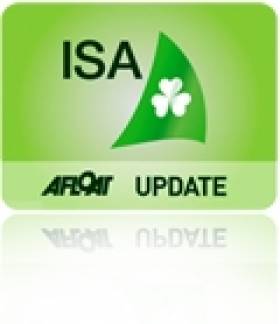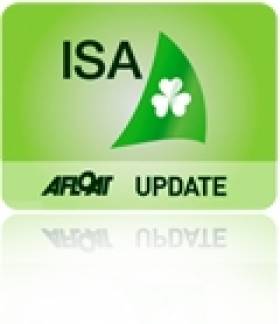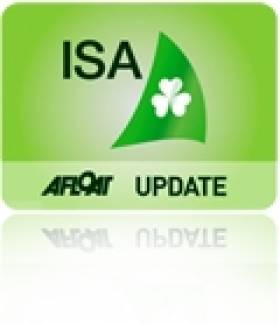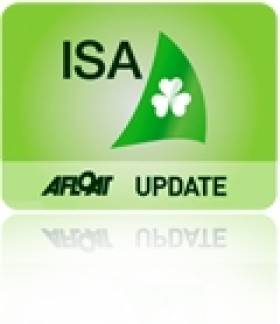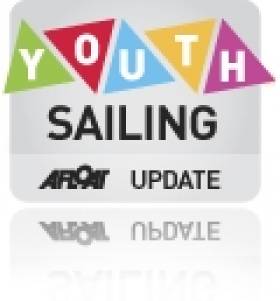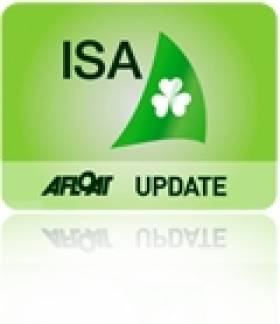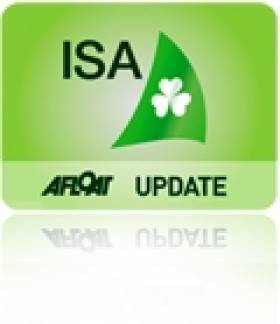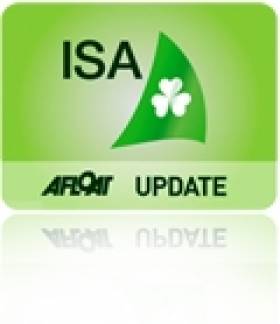Displaying items by tag: All Ireland Sailing Championships
Baltimore's Peter O'Leary Wins All Ireland Sailing Title
#allireland – London Olympic keelboat representative Peter O'Leary is the new All Ireland sailing champion after a light air series was completed at Dromineer on Lough Derg this afternoon. Cork sailors also filled second and third spots with O'Leary's Baltimore club mate Fionn Lyden, who won the Junior title a fortnight ago, second and Royal Cork's George Kenefick, the defending champion, third.
O'Leary from Baltimore Sailing Club dominated the final three-race series and did not to have to sail the last race but did so anyway. He lifted the Helmsman's Salver for the second time, having first won the title in 2006.
O'Leary who raced under the burgee of Baltimore Sailing Club but who also has close ties with Royal Cork becomes the seventh Cork sailor in a row to win the title. His brother Nicholas being a triple champion from 2008 to 2010.
A total of 24 sailors drawn from a selection of one design and cruiser classes competed for the title. O'Leary was issued with a wild card invitation by the Irish Sailing Association (ISA) following his Olympic regatta participation.
Racing in J80 keelboats, the sixth consecutive time the event was held in the keelboat class, the regatta began with a qualifier round on Friday for eight of the teams with only the top three then making it through to a 16 boat, 2 flight preliminary series on Saturday. The original aim had been for the two separate flights of eight boats to sail three races a piece before a two-race repechage and three-race final series on Sunday. However due to the absence of any wind on Saturday afternoon it was not possible for the second flight to sail any races. Based on the circumstances, the race management team made the decision to forego the repechage in favour of attempting the three-race series for Flight 2 in the morning with the top four boats from each flight progressing to a three-race final series in the afternoon.
Competition in the final series was tight. Amongst the eight helms were three former Olympic sailors including Peter O'Leary and Ryan Seaton who both competed at the 2012 Games and Mark Mansfield who sailed at four consecutive Olympics from 1992 to 2004. Also sailing was reigning champion, George Kenefick who was back to defend his title and the youngest of all the competitors, 17 year old Fionn Lyden who only two weeks ago won the ISA Junior All Ireland Championship in Schull, Co. Cork.
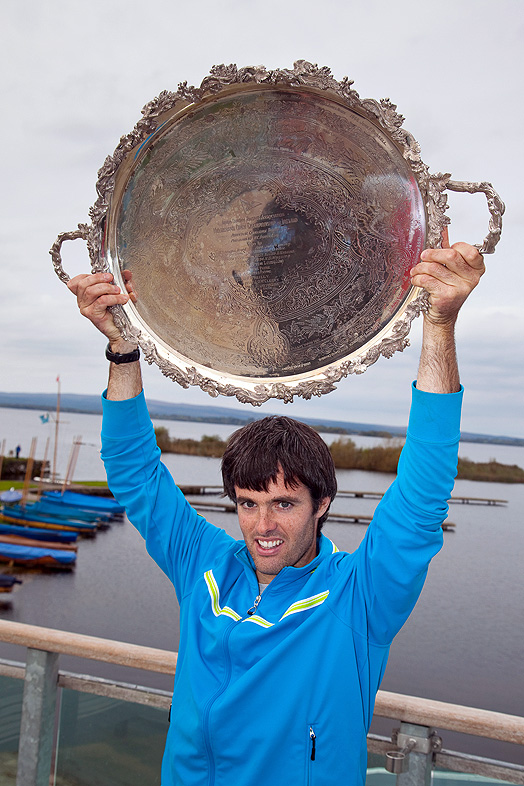
Baltimore's Peter O'Leary holds the original 1947 IYA Salver trophy aloft at Lough Derg this afternoon
The deciding three races began in the early afternoon in winds that steadily grew to 12 knots for the final race. Peter O'Leary, who was sailing with his brother Robert O'Leary and Robbie English, quickly made his presence known by taking the lead and winning the first race. Having been top of the leader board going in to the final, Fionn Lyden and his crew of David Harte and Darragh McCormack slipped to second place overall followed closely by Mark Mansfield in third.
Another race win followed by a second place finish and the title was Peter's. Young Fionn Lyden sailed a magnificent regatta and beat off two Olympians to claim the silver. In third place was last year's winner George Kenefick who clawed his way up from the back of the fleet to win the final race and take the bronze. He finished tied on points with Mansfield but beat him based on a count back; George's best result during the regatta was a first while Mark's was a second.
The final results are below:
|
Helm |
Club |
R 1 |
R 2 |
R 3 |
R 4 |
R 5 |
R 6 |
Pts |
Disc |
Net |
|
Peter O'Leary |
Baltimore SC |
5 |
1 |
2 |
1 |
1 |
2 |
12 |
5 |
7 |
|
Fionn Lyden |
Baltimore SC |
2 |
3 |
1 |
3 |
4 |
3 |
16 |
4 |
12 |
|
George Kennefick |
Royal Cork YC |
1 |
6 |
6 |
5 |
2 |
1 |
21 |
6 |
15 |
|
Mark Mansfield |
Royal Cork YC |
2 |
5 |
3 |
2 |
3 |
8 |
23 |
8 |
15 |
|
Noel Butler |
Dun Laoghaire Motor YC |
3 |
2 |
4 |
4 |
8 |
4 |
25 |
8 |
17 |
|
Ryan Seaton |
Ballyholme YC |
3 |
3 |
1 |
6 |
7 |
7 |
27 |
7 |
20 |
|
David Dickson |
Lough Ree YC |
7 |
1 |
3 |
7 |
6 |
6 |
30 |
7 |
23 |
|
Ian Nagle |
Royal Cork YC |
8 |
2 |
4 |
8 |
5 |
5 |
32 |
8 |
24 |
Kenefick Depends on Repechage for All Ireland Title Defence
#allirelandsailing – Defending champion George Kenefick from Royal Cork has suffered a set back at the All Ireland sailing championships having failed to make the top of his flight after light winds on Lough Derg thwarted a full programme of races being sailed today.
Kenefick did not make the top three in the very light conditions in Dromineer and will be depending on tomorrow's repechage along with the SB20's Ben Duncan, Alexander Mitton of the Beneteau 31.7s and the J24 champion J.P. McCaldin to advance.
Two flights of eight boats were to sail three races a piece today but only the first flight managed any races. With no wind at all on the lough this afternoon the second flight has been postponed to be sailed tomorrow morning, the final day of the competition.
In flight one Schull's Fionn Lyden, who won the Junior All Irelands earlier this month finished top. Lyden had one race win in the force two breeze and finished the three races on a total of six points. He was followed by Fireball dinghy ace Noel Butler on 9 points with local Shannon One Design expert David Dickson third on 11 points.
From Friday's qualifier rounds Mark Mansfield has secured his spot in the second flight of the finals tomorrow. Ian Nagle who had two race wins also went through with Mitton.
The forecast for tomorrow on Lough Derg is slightly better with 8 knots from the east.
Howth's Hegarty a Tip in Tipp for ISA All Ireland
#ISA ALL IRELAND - Howth Yacht Club will be rallying behind Robin Hegarty as he represents the Puppeteer class as the club's 2012 champion at the ISA Senior All Ireland Sailing Championship in Tipperary this weekend.
As previously reported on Afloat.ie, Ireland’s 'most prestigious' annual national sailing event will take place from Friday 5 to Sunday 7 October at Lough Derg Yacht Club in Nenagh.
The invitational championship, which began in 1947, will see 21 of Ireland’s leading sailors compete over the three days in the ISA’s fleet of J80 keelboats for the title of 2012 champion and the ISA Helmsman’s Trophy.
Following a review of the event earlier this year, the championship qualification process has undergone some changes. A total of 16 boats will compete across two fleets of eight on Saturday. 13 of these places are allocated prior to the event; one to the reigning champion, two wild cards and 10 to particular classes based on their attendance figures at national championships.
The remaining places will be filled following an eight boat qualifier on the Friday. There the top three boats will earn their place in Saturday racing. And the top three boats from each fleet on Saturday will progress to Sunday’s final fleet with two places remaining for the top two boats from a two race repechage on Sunday morning.
Sailors Announced for All Ireland Championships on Lough Derg
#The line up for the All Ireland Sailing championships has been released today for the annual event to be staged on Lough Derg on October 5th. The full entry list announced by the ISA is below.
Returning to defend his title will be 24–year old George Kenefick from Cork who narrowly beat four time Olympic sailor Mark Mansfield in a breezy climax in 2011.
Mansfield will also be competing next Friday representing the 1720 class but he will need to win one of the three spots available through the initial qualifier if he is to compete against Kenefick again for the title.
The format for the event was reviewed last year after complaints that some classes were excluded. There has been comment this year though that the new format left 20 classes fighting for three places but it appears from the list below that only eight classes are taking up the Qualification round invitation.
Returning for a second consecutive year will be 2012 Olympic 49er sailor Ryan Seaton. Seaton from Belfast Lough finished third in 2011. Also in the line up is Seaton's London team-mate Star keelboat sailor Peter O'Leary.
The youngest competitor at the event will be Fionn Lyden, fresh from winning the Junior All Ireland Sailing Championship in Schull last weekend.
Friday Qualification Series
|
First Name |
Surname |
Club |
Class |
|
Robin |
Hegarty |
Howth Yacht Club |
|
|
Trevor |
Kirkpatrick |
Carrickfergus Sailing Club |
|
|
Mark |
Mansfield |
Royal Cork Yacht Club |
|
|
Alexander |
Mitton |
Royal Irish Yacht Club |
|
|
Ian |
Nagle |
Royal Cork Yacht Club |
|
|
Pat |
O'Neill |
Clontarf Yacht & Boat Club |
E-Boat |
|
Alan |
Ruigrok |
Rush Sailing Club |
|
|
Emmet |
Ryan |
Royal St George Yacht Club |
Saturday Preliminary Series
|
First Name |
Surname |
Club |
Class |
|
Julie |
Ascoop |
Clontarf Yacht & Boat Club |
IDRA 14 |
|
Noel |
Butler |
Dun Laoghaire Motor Yacht Club |
|
|
Vincent |
Delany |
Royal St George Yacht Club |
|
|
David |
Dickson |
Lough Ree Yacht Club |
|
|
Ben |
Duncan |
ISA |
|
|
Timothy |
Goodbody |
Royal Irish Yacht Club |
|
|
George |
Kennefick |
Royal Cork Yacht Club |
|
|
Guy |
Kilroy |
Royal Irish Yacht Club |
|
|
Fionn |
Lyden |
Baltimore Sailing Club |
|
|
J.P. |
McCaldin |
Lough Erne Yacht Club |
|
|
Jonathan |
O’Rourke |
National Yacht Club |
|
|
Peter |
O'Leary |
Royal Cork Yacht Club |
Wild Card |
|
Ryan |
Seaton |
Ballyholme Yacht Club |
Wild Card |
|
TBC |
Friday Qualifier |
||
|
TBC |
Friday Qualifier |
||
|
TBC |
Friday Qualifier |
Selection for All Ireland Sailing Competition Leaves 20 Classes Fighting for 3 Places
It is important that all classes can aspire to participate in the All Ireland Championships but it needs to be seen to be fair and equitable. Giving pre-emptive qualification rights purely on the basis of numbers attending a class's championships when many are struggling for numbers is the wrong tack says Water Rat because it does little to enhance the stature of the event.
Having looked at the selection of participants from different classes for the All Ireland sailing competiton (formerly theHelmsman's Championships), I wonder if the ISA, the organiser of the event, is concerned at the consequences of the changes they made to the qualification process? There will be obvious delight for some in the pre qualified-entry into the finals but as a regular participant in several other classes I have to observe that important qualitative issues seem to have suffered as a consequence of the new politically correct process. (See below for ISA arrangements).
Without denigrating the abilities of representatives from classes such as the Mermaid, Squib, Water Wags, ICRA, 2 & 3, it is patently silly to determine priority eligibility on a purely numeric fleet size only basis. This is political correctness gone completely mad! For example ICRA Cruisers Zero, the class of our Commodore's Cup squad would never be in with a chance of pre-qualification as the Cruisers Zero fleet of forty foot boats could never muster the same numbers as say a dinghy class.
Expecting people from other competitive classes to make a significant three day commitment for accommodation, entrance fees and damage deposits with the prospect of being eliminated after an afternoon's competition seems grossly unfair and will inevitably discourage attendance by many of the most talented sailors coming from less numerically strong fleets with perhaps the greatest depth of talent.
Under these circumstances it will not be a surprise if many so called 'second' and 'third' tier nominees from extremely competitive but smaller classes ignore participation in the event because of cost and uncertainty of ultimate participation for the last phase. This is because only three places are available from 20 potential candidates from classes such as the highly competitive SB20, Flying Fifteen, 1720, Fireball, J24, RS 200, RS 400, and Dragon, and does not include other strong classes such as the Etchells and J109 who are on a waiting list for an opportunity to qualify. The competitive National 18s (who had fifty boats for a 2011 anniversary event) don't even get a mention!
The event also known as the 'All Ireland Sailing Championships' and 'the Champion of Champions Event' has had many changes over its 60–year lifespan but change needs to be made carefully and for the right reasons.
If ever there was an example of unexpected consequences from well intentioned changes to what was acknowledged as a system which was not working, is this it?
Please let us know your views in the comments box below
ALL IRELAND SAILING 2012 (from ISA Website on September 7th 2012)
The ISA is delighted to announce that the ISA Senior All Ireland Sailing Championship will take place in Lough Derg Yacht Club from the 5th to the 7th of October.
Invitations have also been sent to selected nominees as follows:
The first group have been invited directly to the final series on Saturday from Stage One:
Stage One
2011 Champion George Kenefick
Wild Card (TBA)
Wild Card (TBA)
Top 3 Dinghy & Keelboat Classes
Laser Radial *
Laser *
Mermaid *
Squib *
ICRA '2' *
ICRA '3' *
Next 4 from combined Dinghy & Keelboat Classes
GP14
Shannon OD
Multihull
Water Wag
Stage Two Qualifier - Friday
Junior Champion
Laser SB20
Ruffian
Fireball
J24
ICRA '1'
IDRA 14
Puppeteer
Dragon
RS Elite
Sigma 33
1720
First 31.7
RS200
RS400
Shipman
Waiting for Qualifier place:
Howth 17
E-Boat
ICRA '0'
Etchells
J/109
The names with an * are from the top three dinghy and keelboat classes by number. Only these classes are allowed to pass an invite to the next nominee from their class as far as third place. The next group are in the qualifier with at least three places available. Followed by the waiting list who will move up as those become available.
ISA Junior & Girls All Ireland Sailing Championships
Each competitor will sail with one crew member of their choice in one of the nine Fireflies. On Saturday the teams will be separated into two flights (groups) and will sail three races each. The same flights will then sail an additional two races on Sunday with the top three teams in each flight progressing through to the medal race.
The 18 competitors taking part in the 2011 ISA Junior & Girls All Ireland Sailing Championships are:
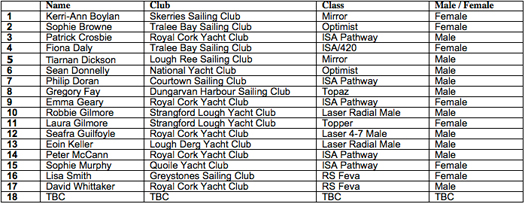
Who will win Sailing's All Ireland Champs?
They've changed the date, the notice of race and now the venue but the eight finalists in this year's All Ireland Sailing Championships stay the same. We're all hoping the ISA gets more luck on the wind front next Saturday when the championship is rerun in Kinsale. Who do you think will win? Cast your vote in the left hand column.
More All Ireland articles HERE
All Ireland Champs to Sail Again on November 20
After an abandonment due to lack of wind in early October and a long wait for news of a new date, the Irish Sailing Association has announced its All Ireland Championship will now take place on November 20th.The competitors have agreed to be available on this weekend to sail but the announcement on the ISA website does not name the venue, presumably the original location, Cork Harbour. the finalists and drawn boats are:
Final Flight
1. McCann Fitzgerald Anthony O'Leary
2. D/L Marina Neil Kenefick
3. O'Leary Insurance Ewen Barry
4. Smyths Toys Nicholas O'Leary
5. Dyno Rod Garrett May
6. Smart Niall Henry
7. KPMG James Espey
8. Irish Examiner Nick Walsh
Cork Harbour's Walsh on Top After First Round of the 'All Ireland'
Local helm Nick Walsh representing the National 18 dinghy class is guaranteed a place in the final of the All Ireland sailing championships this weekend after wins this afternoon. Conditions were excellent with northerly breezes and flat water and a strong flood tide. Joining him on Sunday in the finals is Sligo's Niall Henry (GP14). Racing continues tomorrow in Cork harbour and the competition for the Junior and Girls Fleets will also get underway. Bob Bateman's photos from this afternoon's flight action below:
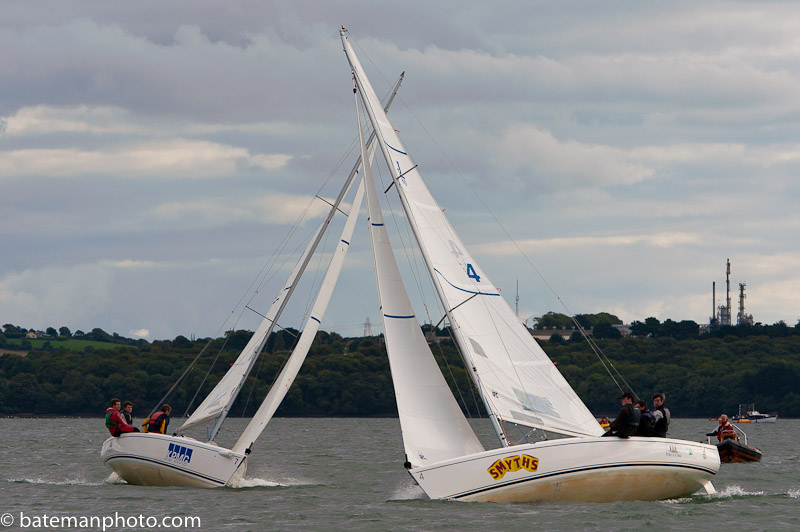
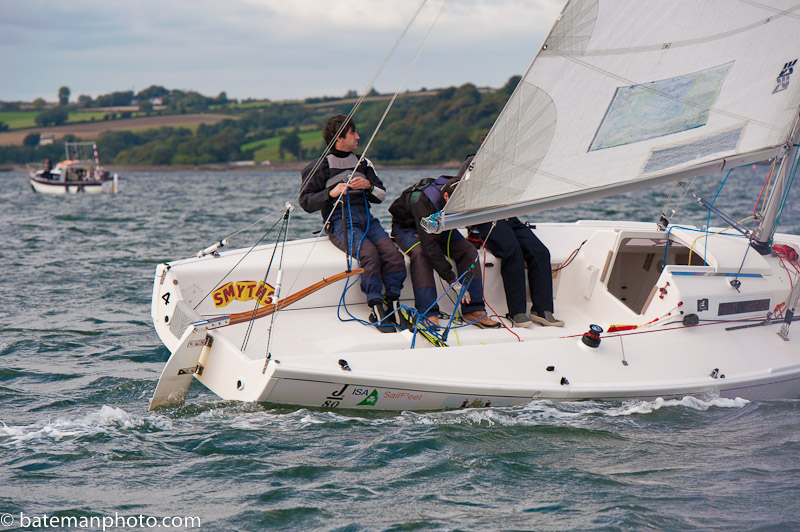
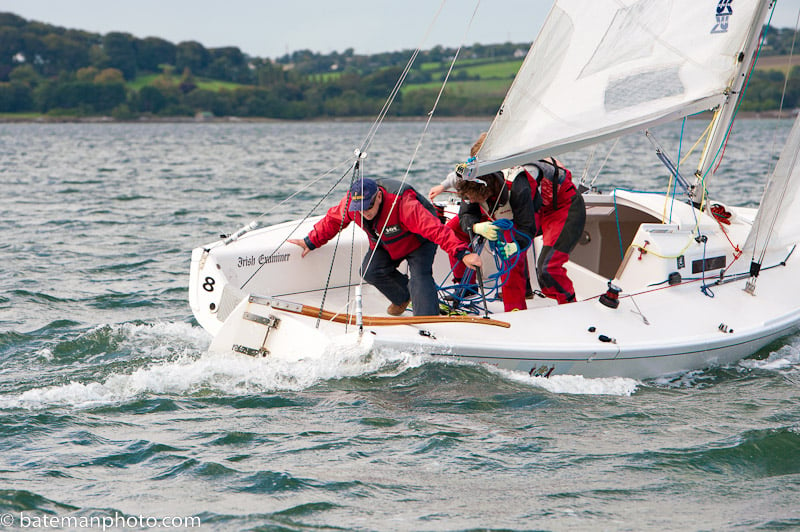
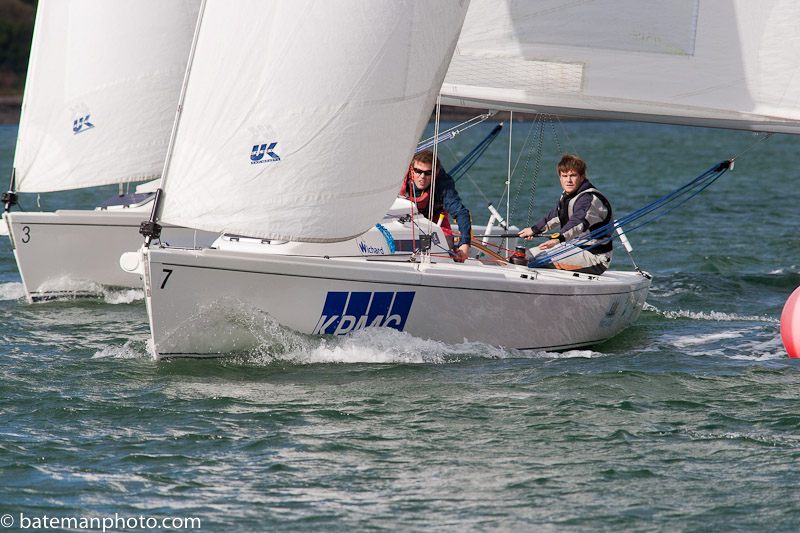
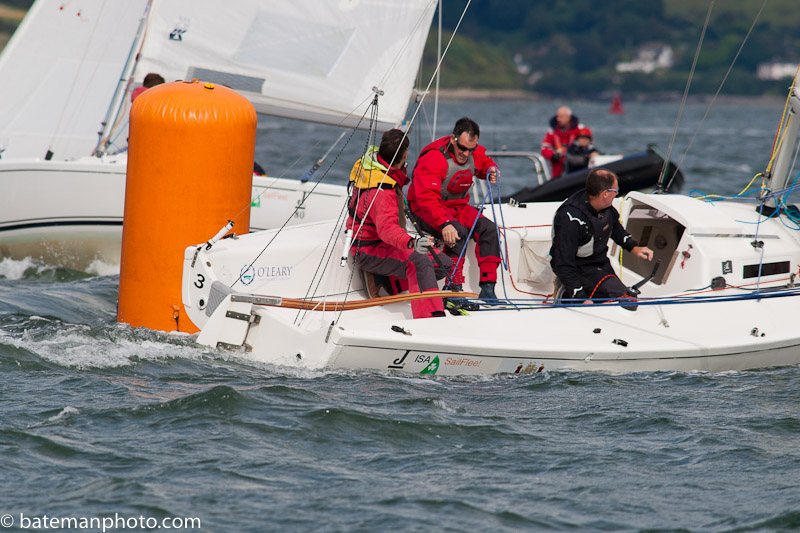
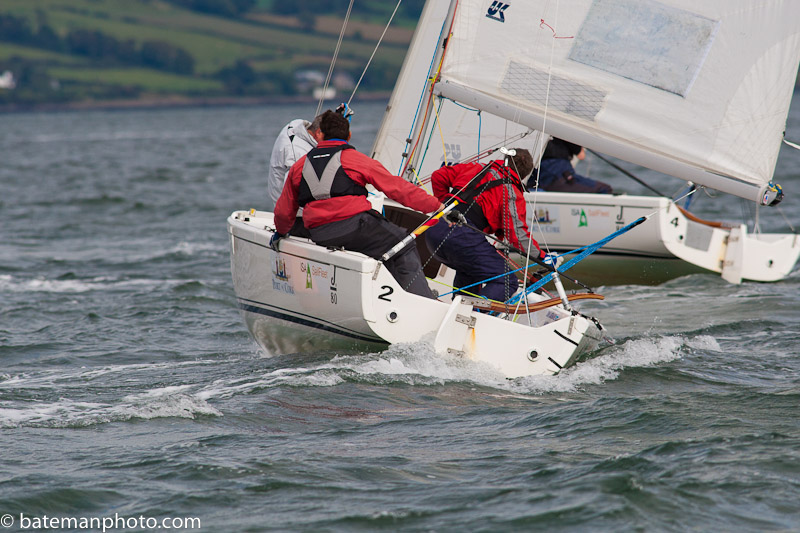
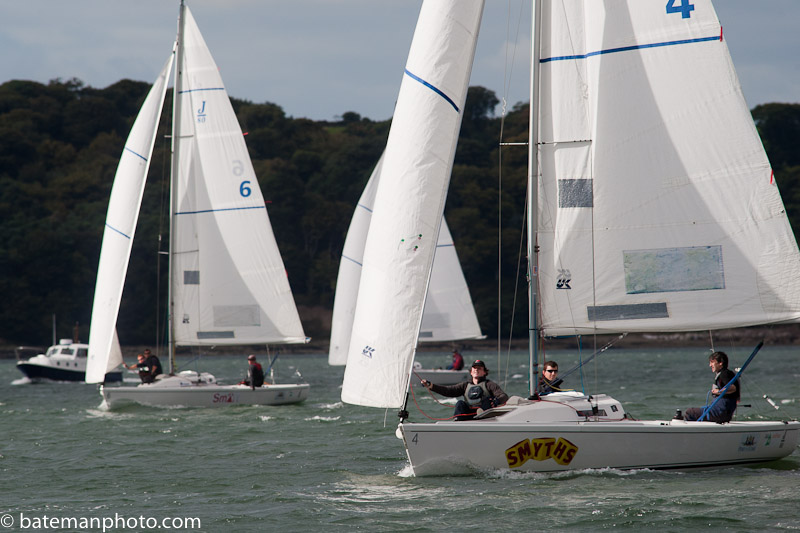
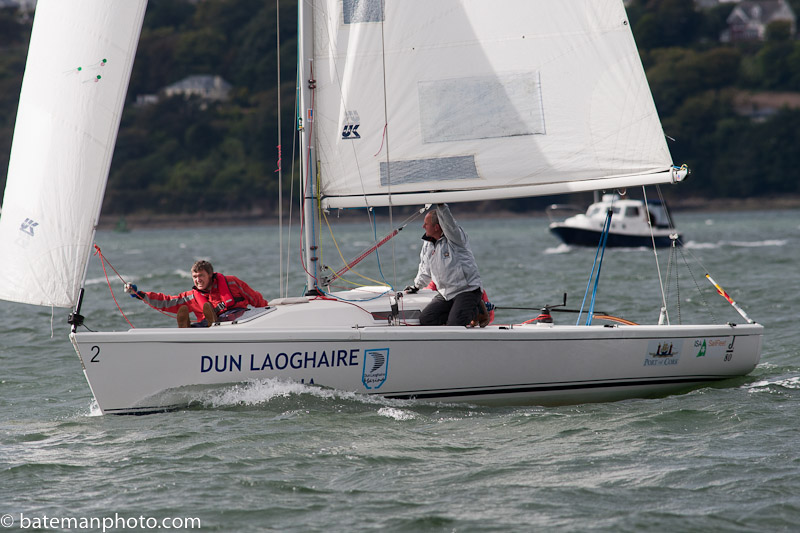
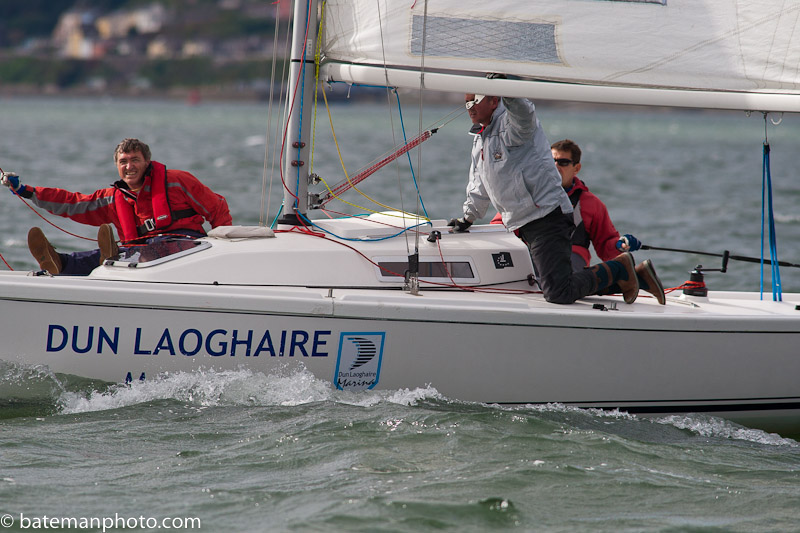
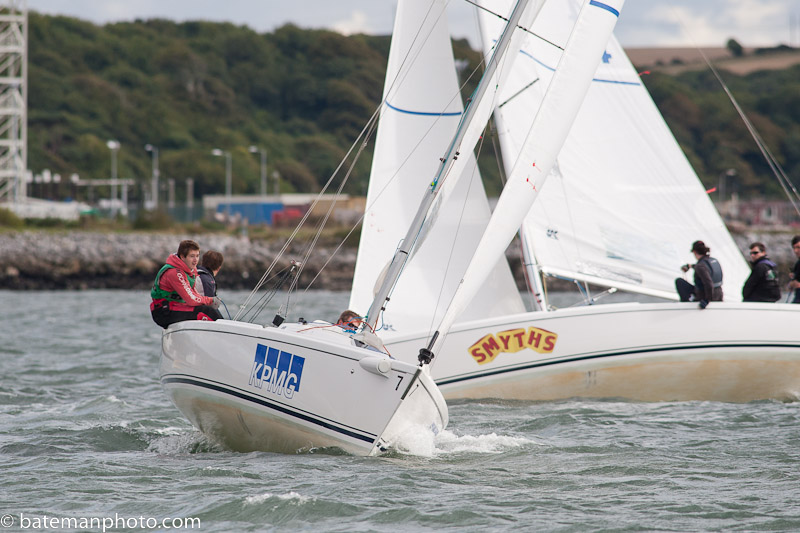
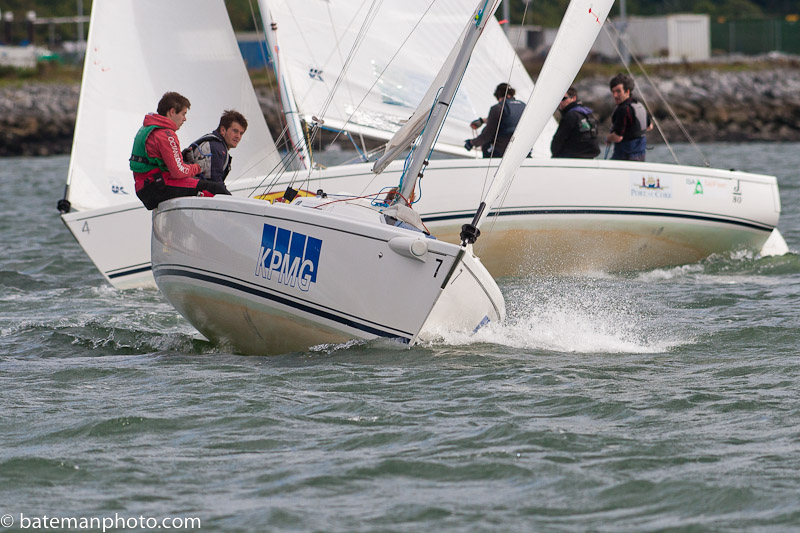
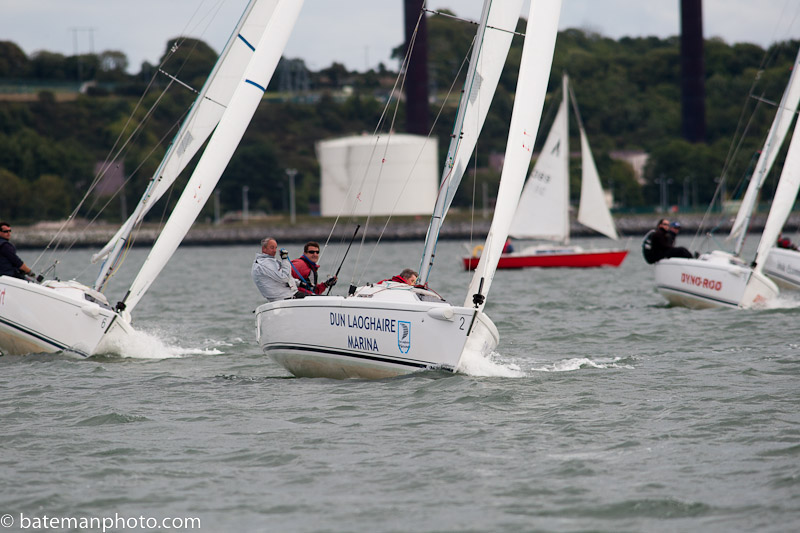
Provisional results for Flight 1 Race 3
|
Boat |
Helm |
Place |
|
2 |
Nick Walsh |
1 |
|
3 |
Conor Turvey |
2 |
|
4 |
Niall Henry |
3 |
|
6 |
Garrett May |
4 |
|
7 |
Simon Mitton |
5 |
|
5 |
Clem McElligott |
6 |
|
8 |
Pat O'Neill |
7 |
Provisional results for Flight 1 Race 2
|
Boat |
Helm |
Place |
|
2 |
Nick Walsh |
1 |
|
4 |
Niall Henry |
2 |
|
6 |
Garrett May |
3 |
|
3 |
Conor Turvey |
4 |
|
7 |
Simon Mitton |
5 |
|
8 |
Pat O’Neill |
6 |
|
5 |
Clem McElligott |
7 |
Provisional results for Flight 1 Race 1
|
Boat |
Helm |
Place |
|
7 |
Simon Mitton |
1 |
|
4 |
Niall Henry |
2 |
|
6 |
Garrett May |
3 |
|
2 |
Nick Walsh |
4 |
|
5 |
Clem McElligott |
5 |
|
8 |
Pat O’Neill |
6 |
|
3 |
Conor Turvey |
7 |


























